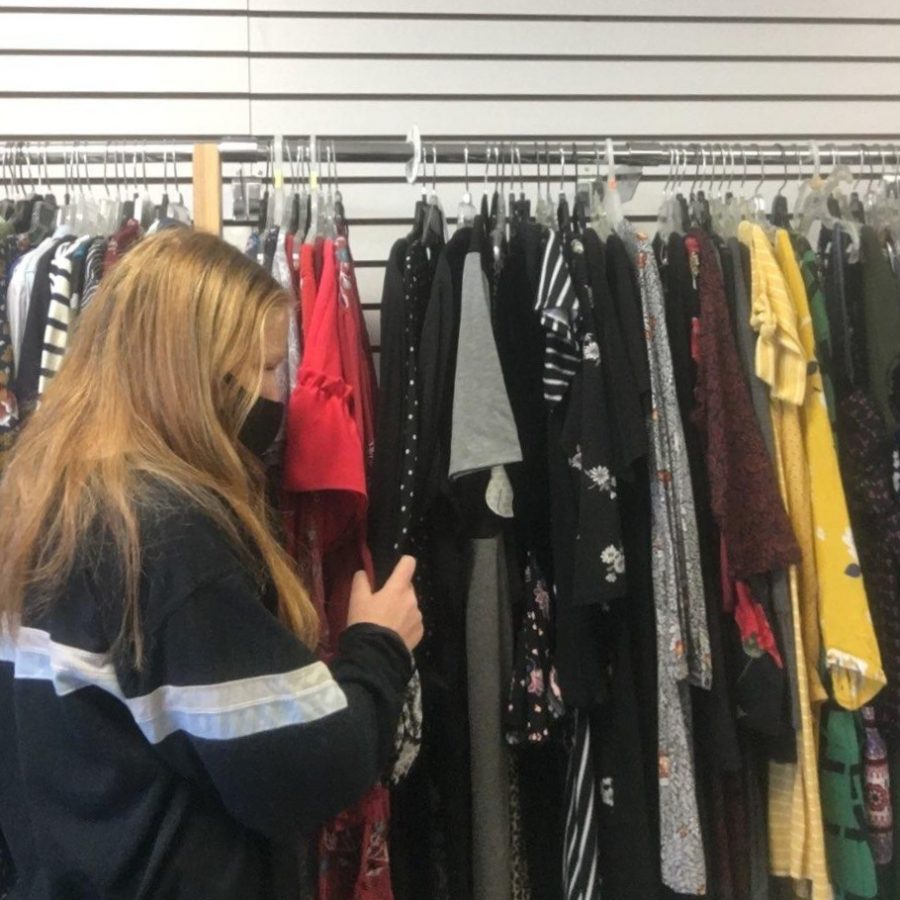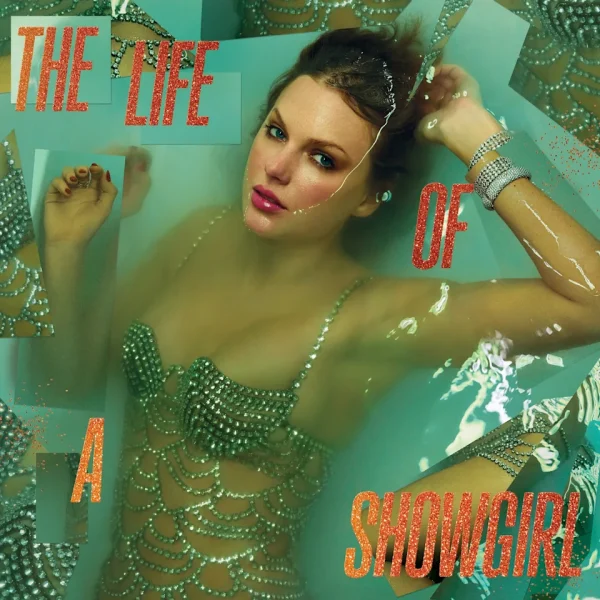The fashion monopoly: the hardest game to beat
photo by Sophia Canabal
Sophomore Abigail Miller shops a Sweet Repeats, a local Oviedo thrift store. Thrifting is often less expensive and more sustainable than buying from mainstream companies.
“Flash sale” signs and “50% off” banners are plastered on every store window, and for many shoppers, these advertisements are the opportunity of a lifetime. Every day, millions of frenzied clothing fanatics rush to sale counters to claim their bargain. With eager consumers ready to spend, fast fashion companies are more than ready to open their greedy pockets and take advantage of loyal customers, suppressing small creators. Small businesses are constantly falling prey to international companies, who wrongfully redistribute stolen work under their name.
To companies like Fashion Nova, Forever 21 and H&M, ethical production is of the least concern. Many of their products have been publicly recognized as stolen artwork. Their grievances have ranged from Forever 21’s advertisement of Native American headdresses to Old Navy using graffiti artist’s work without permission. Due to the lack of restrictions against plagiarism within the fashion industry, independent businesses are especially vulnerable to others looking to copy their designs. The Copyright Alliance, an organization that enforces rules in terms of using intellectual property, states that only graphic and textile designs are protected by copyright law. By manipulating the material quality and production method of stolen designs, companies can easily bypass protections.
Gosha Rubchinskiy, a Russian fashion designer and filmmaker, is one among many who fall victim to inadequate copyright protection. The unique, gothic fonts that are commonly printed on H&M clothing were originally created by Rubchinskiy, but its unintended popularity within the fast fashion industry has caused it to become anything but exclusive. The lack of credit given to Rubchinskiy has significantly damaged the prestige of his brand, allowing H&M to unethically capitalize off of his design. Two years after the font was first plagiarized, Rubchinskiy still receives no credit for his creation, and fashion “giants” continue to smother his brand. The existing loopholes in copyright protection have made it impossible for him to legally fight for his credit.
Many companies have begun revolving their advertising and production methods around making more for less, often sacrificing their products’ quality for quantity. This irresponsible tendency not only plays a part in overproduction and unsustainable practices, but it also encourages such companies to stoop surprisingly low when it comes to ethical advertising. SHEIN, an online business notorious for their low prices and frequent sales, has been publicly called out for their products’ quality and integrity, selling cultural appropriate items such as Muslim prayer mats as “decorative carpets.” In advertising these items, SHEIN is creating a false representation of Muslim culture, undermining its importance and being extremely insensitive to those who practice it. It is outrageously irresponsible for a company with international influence and millions of purchases to have such lack of judgement on which items are appropriate to advertise.
SHEIN is not the only unethical company within the fashion industry, and it will not be the last. Because a company’s success is hinged on its customers’ purchases, it is the consumers’ responsibility to hold themselves and fashion giants accountable for grievances against independent creators.
However, it is difficult to sacrifice the affordability of clothing sold by large companies when most independent businesses, while usually providing higher quality products, are much more expensive. Because they operate on a smaller scale, these businesses have to compete with major corporations to gain customers while still maintaining a signature look. However, upholding the quality of their products is easier when selling to a smaller range of consumers, but this also forces them to raise prices.
Encouraging the purchase of thrifted clothing would act as the first step in ensuring honest production within dishonest corporations. Not only does it provide consumers with an inexpensive source of unique clothing, but it gives avid shoppers an alternative that doesn’t contribute to unsustainable manufacturers. Thrifting has recently become very popular,, to the point where even wealthy celebrities use thrift stores to find unique outfits. Likewise, it can sometimes be a way to find more expensive clothes for amazing deals, such as Ralph Lauren polos and vintage Levi jeans.
Although investing in recycled clothing is a good first step to ending the fashion monopoly, the future of small designers rests on the shoulders of consumers. Just as someone should check the credibility of any given source, a consumer should investigate the integrity of companies who bypass scrutiny by using their wealth. Making conscious choices when it comes to shopping is essential to supporting independent clothing stores that are being squashed by companies that lack integrity.
Your donation will support the student journalists of Hagerty High School. We are an ad-free publication, and your contribution helps us publish six issues of the BluePrint and cover our annual website hosting costs. Thank you so much!







